The Ultimate Buyer’s Guide to Wheel Stops: Choosing the Right Solution for Your Facility
Choosing the right wheel stops can make a big difference to the safety and organisation of your facility. From protecting property to helping vehicles park securely, wheel stops are essential in any parking area. With so many options in materials, sizes, and designs, finding the best fit can feel overwhelming. In this guide, we’ll break down everything you need to know to pick the perfect wheel stop for your space, making your decision simple and stress-free.
What Are Wheel Stops?
Wheel stops are essential parking aids that help guide vehicles into parking spaces, preventing accidental collisions with walls, equipment, pedestrians or other parked cars. Typically installed at the end of parking spots, they act as a physical barrier that alert drivers when their wheels have reached a designated stopping point. This simple but effective solution not only minimises property damage but also enhances overall safety within parking facilities, making them a valuable addition to car parks, garages, and loading bays.
Why Install Wheel Stops?
Enhance Safety: They enhance safety by preventing vehicles from rolling too far forward, reducing the risk of collisions with pedestrians, other vehicles, or structures.
Protect Infrastructure: They act as a buffer, preventing vehicles from damaging walls, fences, and other assets, saving on costly repairs and reducing wear on critical infrastructure.
Improve Parking Control: They create clear boundaries, guiding drivers to park within designated spaces and promoting an orderly, efficient layout that maximises parking capacity.

Rubber Wheel Stops
Rubber wheel stops are highly durable and designed to withstand harsh weather conditions and UV exposure, making them ideal for outdoor installations. Their flexible nature allows them to conform to uneven surfaces, preventing cracking or breaking over time. This flexibility also makes them softer, reducing the risk of damage if a car hits them.
When selecting rubber wheel stops, it’s important to choose the correct type based on the vehicles that will be using them. Wheel stops designed for cars are engineered to handle lighter impact forces versus ones designed for HGVs. This will ensure optimal durability and performance.
Plastic Wheel Stops
Plastic wheel stops are lightweight and easy to install, making them a convenient choice for various parking areas. They are also highly resistant to chipping and cracking, providing durability in regular parking applications. Additionally, their UV resistance helps maintain their appearance and structural integrity over time.
Plastic wheel stops are best suited for use with cars and light-duty vehicles. They are not an ideal choice for areas with very high-impact conditions or larger vehicles like HGVs or trucks.
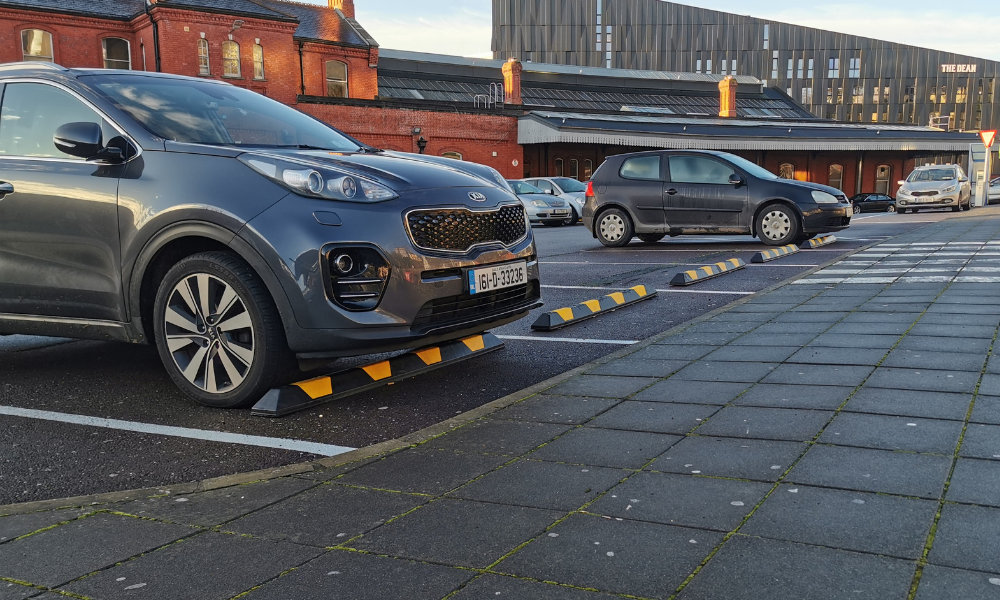
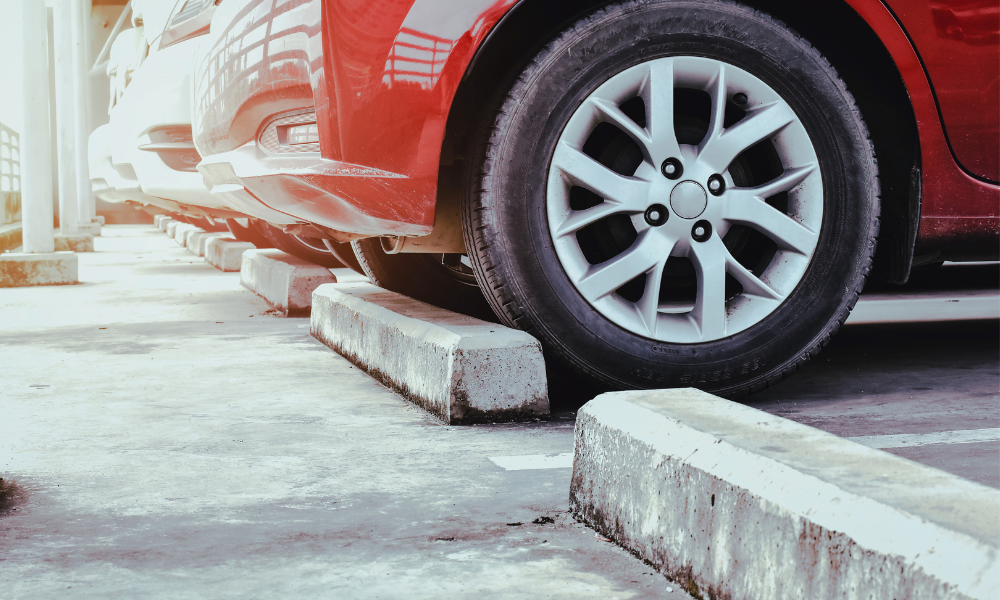
Concrete Wheel Stops
Concrete wheel stops are heavy-duty and extremely sturdy, making them an ideal choice for high-traffic areas and locations where large vehicles frequently park. Their solid construction provides a strong physical barrier, ensuring vehicles stay within designated spaces even under demanding conditions.
While durable, they are prone to cracking and crumbling over time, especially in harsh weather or high-impact environments. Their weight can make installation more challenging, often requiring specialised equipment. Regular maintenance is required to prevent degradation.
Steel Wheel Stops
Steel wheel stops are exceptionally durable and designed to withstand high-impact conditions, making them ideal for industrial or heavy-duty applications. They can handle the weight and force of large vehicles, such as trucks and machinery, ensuring longevity and reliability in demanding environments.
Steel wheel stops come with a higher upfront cost compared to other materials and often require professional installation due to their weight. Additionally, they can sometimes be driven over by HGVs or larger vehicles, as their lower profile may not always provide a clear stopping point for oversized wheels.
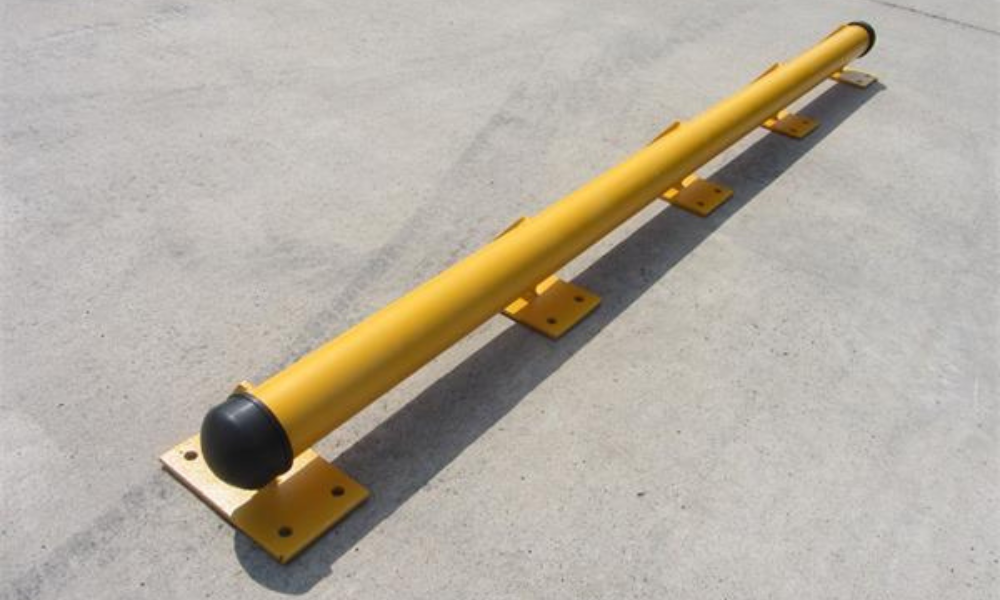
Factors To Consider When Choosing A Material
Expected Vehicle Types and Weights: Select materials suited to the vehicles using the area; rubber and plastic for light vehicles, concrete or steel for heavy-duty applications.
Durability Requirements Based on Location (Indoor vs Outdoor): Outdoor use requires weather-resistant materials like rubber or plastic; indoors, most materials perform well with fewer durability concerns.
Installation and Maintenance Preferences: Lightweight options like rubber are easier to install and maintain, while concrete and steel need professional installation and periodic upkeep.
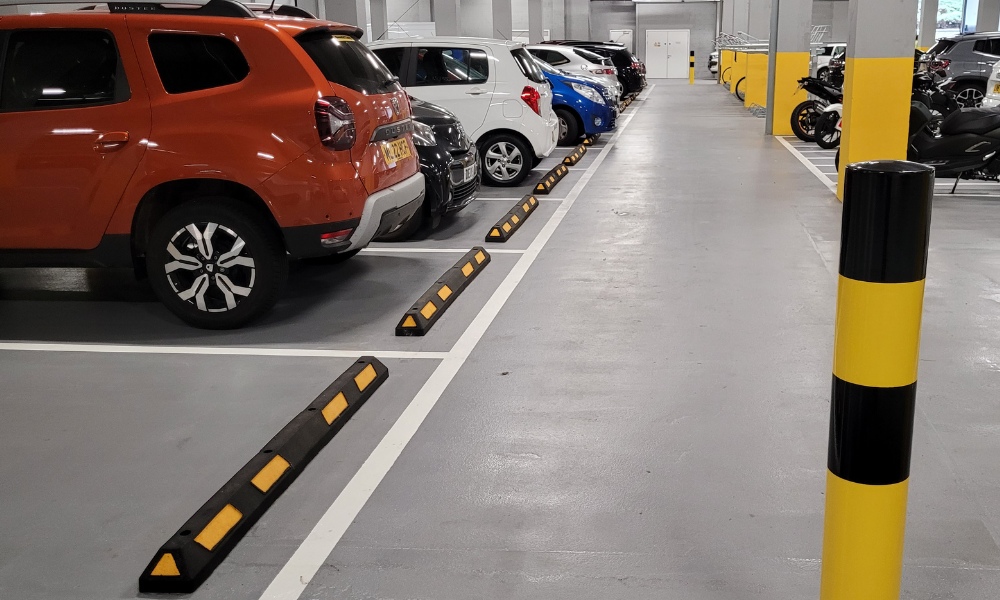
Indoor vs. Outdoor Use
Indoor stops can use lighter materials like plastic or rubber. Outdoor stops require durable, weather-resistant options such as treated rubber, plastic, or concrete to withstand weathering and exposure, ensuring longevity and reliability in various environmental conditions.
Car Park
Car park wheel stops are specifically designed for standard vehicle parking areas, providing a safe stopping point to prevent accidental rollovers. Commonly made from durable rubber or plastic, they are available in standard sizes that fit typical car spaces, ensuring easy installation and effective use in car parks.
Warehouse and Industrial Facility Wheel Stops
For warehouses and industrial facilities, heavy-duty materials are essential. Steel wheel stops offer durability and impact resistance for high-traffic areas, but HGV-grade rubber wheel stops are also ideal for this environment. They provide similar strength with added flexibility and are often preferred for their ability to absorb impact while reducing vehicle wear.
Public Car Parks and Commercial Parking Garages
Rubber or plastic wheel stops are ideal for public car parks and commercial garages due to their lightweight, easy installation, and high visibility. Adding reflective strips enhances safety by improving visibility in dim lighting, helping drivers navigate parking spaces safely.
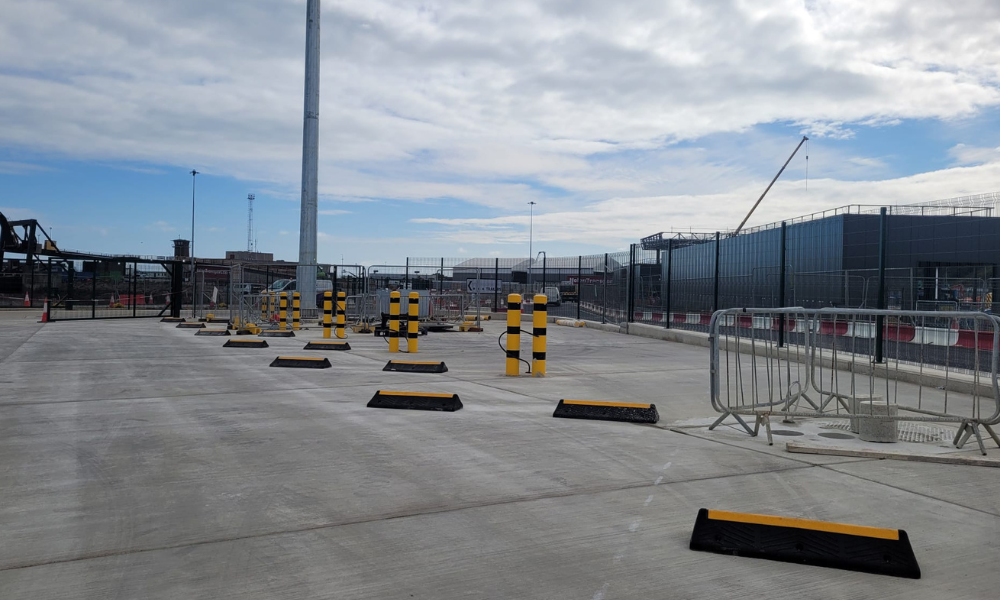
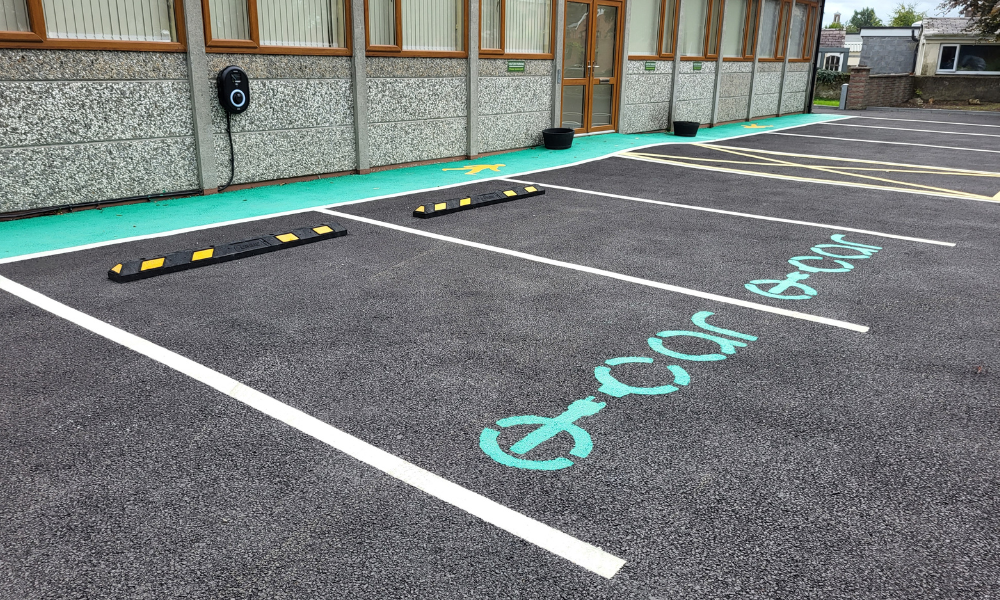
Speciality Locations
EV Charger Wheel Stops: Designed with durable materials and a height suited for EVs, these wheel stops help position vehicles accurately near charging points. Available in green or blue, they align with EV colour schemes for added visibility and a cohesive look in charging areas.
Airports or Distribution Centres: HGV wheel stops are ideal for trucks and heavy equipment, providing strength and durability for high-impact areas.
Vehicle Type Considerations
Passenger Vehicles: Rubber or plastic wheel stops work well for passenger car parks, providing a cost-effective solution that meets standard durability needs without requiring heavy-duty materials.
Trucks & Heavy-Duty Vehicles: HGV wheel stops offer the strength needed to handle the greater weight and impact from trucks, ensuring long-lasting durability and safety in industrial areas.
Motorbikes & Bicycles: Shorter wheel stops are ideal, providing stability without obstructing movement or posing tipping risks, allowing motorcycles and bikes to park easily and securely.
Key Factors to Assess Before Choosing a Wheel Stop
Traffic Volume and Vehicle Type: Assess the types and frequency of vehicles in the area to ensure the wheel stop material can handle the expected load and impact.
Environment: Determine if the installation site is indoor or outdoor, and account for any extreme weather that could affect material durability.
Installation Requirements: Consider installation ease and decide if a temporary or permanent setup best suits the facility’s needs and usage.
Budget: Balance initial costs and maintenance, selecting a material that offers both affordability and the necessary durability for the environment.
How To Maintain Your Wheel Stops
Routine Inspections: Conduct regular inspections to check for wear, cracks, or any signs of loosening. Prompt repairs or replacements will help maintain functionality and safety.
Cleaning: Clean wheel stops regularly to keep them visible, especially in outdoor areas where dirt and debris can reduce visibility and effectiveness.
Replacement Guidelines: Replace wheel stops when they show significant wear, cracks, or damage, ensuring they continue to provide optimal safety and maintain a professional appearance.
Final Considerations: Making The Right Choice
Choosing the right wheel stop involves assessing vehicle type, environment, installation needs, and budget. Matching materials and features to these requirements ensures maximum safety and durability. For personalised recommendations and assistance, contact Pittman’s team. Our experts are ready to help you find the best wheel stop solutions tailored to your facility’s unique needs.





